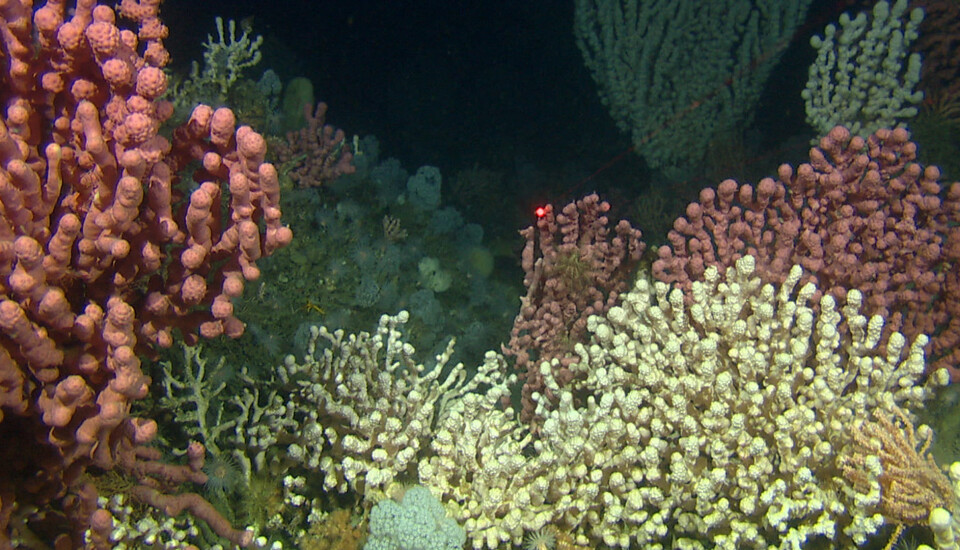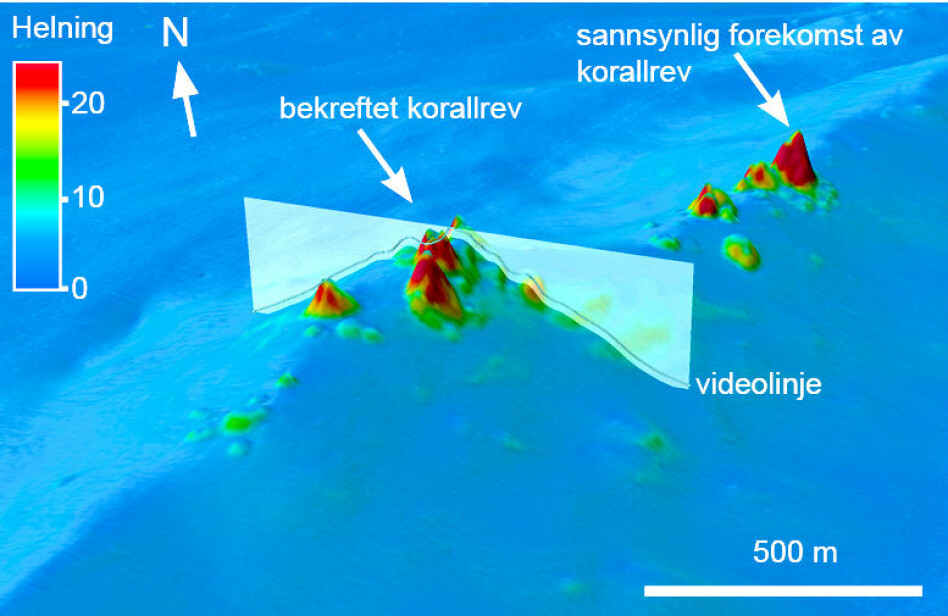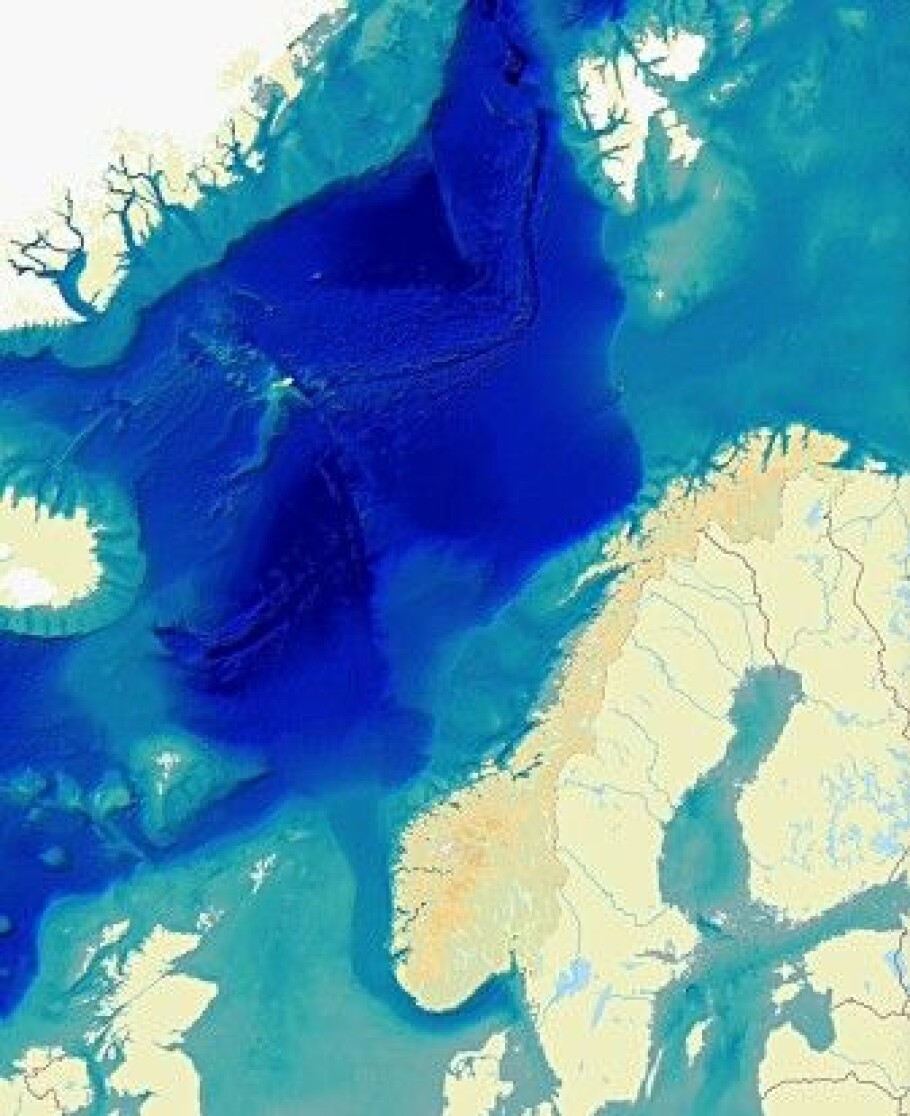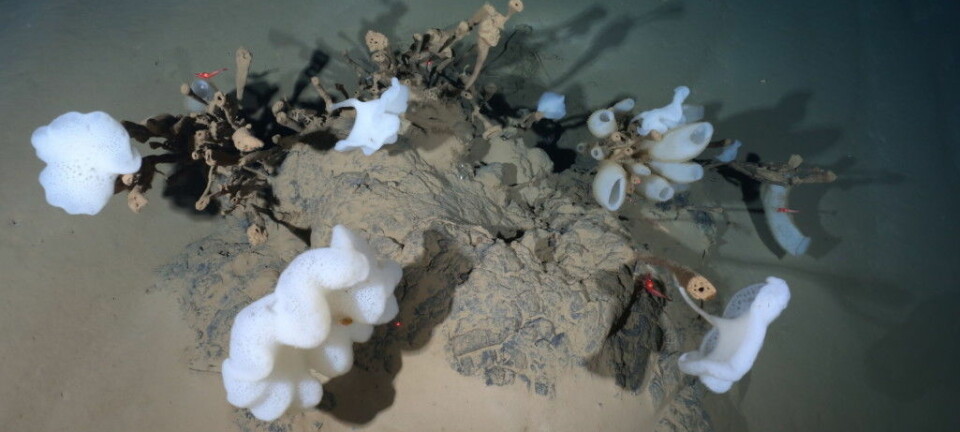
As many as 200,000 coral reefs off Norway
Researchers are surprised by the number.
In recent years, the large multiagency seabed survey project Mareano has systematically mapped much of the seabed off the coast of Norway.
That’s how researchers have found as many as 200,000 likely occurrences of living and dead coral reefs along what is called Eggakanten.
“The fact that there appear to be so many corals here has surprised us,” says researcher Terje Thorsnes at the Geological Survey of Norway (NGU), one of the cooperating agencies.
Confirmed by filming
Scientists used detailed depth data from the Norwegian Mapping Authority to find all the coral reefs.
“We first discovered hummock forms on the seabed,” Thorsnes said. “Then we realized in many cases these were coral reefs.”
In several places researchers confirmed the finds by underwater vehicles that were sent down to film the corals. The researchers estimate that 10 to 15 per cent of the occurrences they detected may be misclassified.
Here’s a link to a new map showing how the coral reefs extend along the Norwegian coast from Møre, on the central southwest coast, to Lofoten, the long chain of islands extending into the Norwegian Sea, above the Arctic Circle.
Thorsnes points out that it’s important to know how prevalent these cold water corals are, because they are vulnerable ecosystems that can be destroyed by trawling and petroleum activities.

Could be even more
It was at the end of the 1980s that Norwegian scientists first became aware that cold-water coral reefs form characteristic structures on the seabed.
They discovered this in the process of planning for an underwater gas pipeline to be laid to Haltenbanken, an oil and gas area off the coast of mid-Norway.
The Norwegian Mapping Authority mapped the Sula Reef, north of the island of Frøya in Sør-Trøndelag in 1999. This coral reef is located at about 300 metres deep and is the world's largest known complex of deep cold-water corals.
The reef is up to 35 meters high and is mainly made up of the rock coral Lophelia pertusa.
The coral reefs that researchers have now found grow along Eggakanten and the outer part of the central Norwegian continental shelf.
Eggakanten is the name given to the edge of the Norwegian continental shelf, where it bends steeply towards the much deeper part of the Norwegian Sea.

Scientists collaborate
“We believe that there may be even more coral reefs closer to the coast. We’re in the process now of analysing more data,” says Thorsnes.
In a new survey project called Marine grunnkart i kystsonen (Marine base map in the coastal zone), which was proposed by the government in the state budget for 2020, researchers will initially look at three areas outside Stavanger, Sunnmøre and Troms, in southern, central and northern Norway.
Researchers from NGU, the Institute of Marine Research and the Mapping Authority are collaborating on this research. In the long term, the goal is to map all of the seabed, including all coral reefs off the coast of Norway.
"But many of the most important areas with coral reefs may have been mapped already," Thorsnes said.
“If we find more, it is most likely that they will be in the coastal zone,” he said.
Rich ecosystems
Cold-water coral reefs provide rich habitat for undersea flora and fauna.
As corals grow and die, they can form hummock-shaped reefs made from coral material.
These cold-water coral reefs are found down to 400-500 metres deep. A type of reef made from what are called soft-bottom corals can grow even deeper.
The shallowest known cold-water coral reefs are only a few tens of metres deep in the Trondheim Fjord.
It is thus not the depth of the sea that determines whether corals can grow in Norwegian waters. What seems to be decisive is water temperature. That means scientists don’t expect to find coral reefs further north than up to the Tromsø Flak, an area in the southernmost Barents Sea.
The video shows a beautiful pig tail coral that researchers found at 850 metres deep along Eggakanten. This is an example of what scientists call a soft-bottom coral.
Damaged by bottom trawling
Over the past 15 years, it has become increasingly clear that many coral reefs off the Norwegian coast may have been damaged by bottom trawling. This has been confirmed by video recordings of the seabed.
Most of the damage appears to have occurred about 30 years ago, before several Norwegian coral reefs were protected.
Fortunately, the same video footage from the Institute of Marine Research also shows that damaged corals in Norwegian waters can regrow fairly quickly.
———
Read the Norwegian version of this article at forskning.no
































